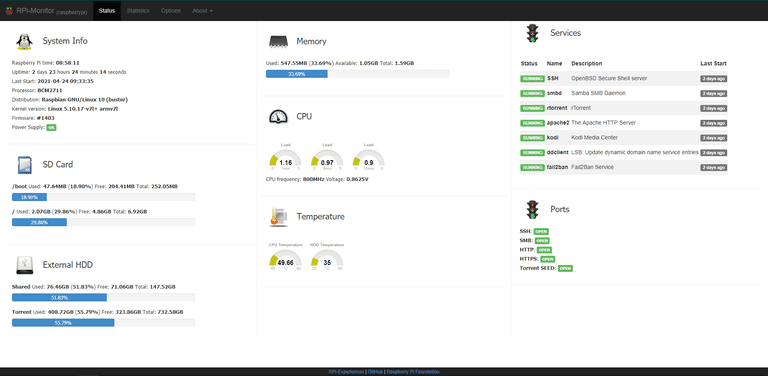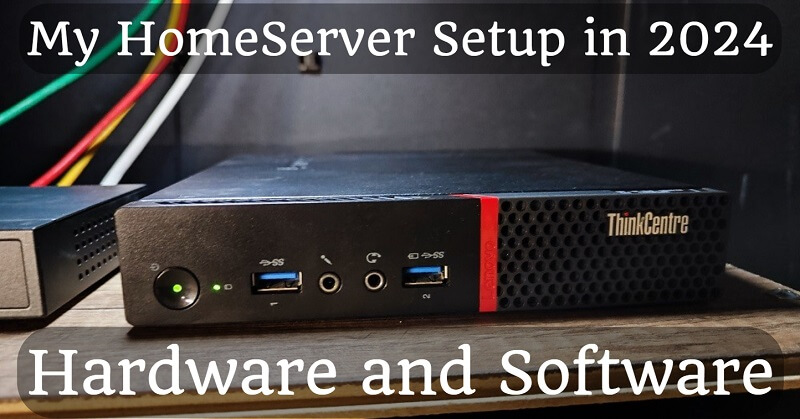
Install and Customize RPI-Monitor
If you want to monitor your Raspberry Pi hardware and software, you can do it with RPI-Monitor. You can monitor ports, services, CPU, memory usage, disk usage and much more! Screenshot of my final version at the bottom of this page. Let's see how it works:
Install
- First of all login to Raspberry Pi via SSH (the easiest way is to use Putty).
- Install dirmngr (required to install RPI-Monitor)
sudo apt install dirmngr
- Add an official repository
sudo wget http://goo.gl/vewCLL -O /etc/apt/sources.list.d/rpimonitor.list
- Avoid unknown repo issue by add key from Ubuntu keyserver
sudo apt-key adv --recv-keys --keyserver keyserver.ubuntu.com E4E362DE2C0D3C0F
- Run apt update to receive a list of available packages:
sudo apt update
- Install RPI-Monitor
sudo apt install rpimonitor
- Update itself
sudo /etc/init.d/rpimonitor update
- Print IP of your Raspberry Pi
hostname -I
- Replace the IP and open the monitoring website
192.168.0.22:8888
OK, you should see the monitoring page. That's fine, but we need to create a systemd service to start this service automatically at boot time. To do this,
- Create a new systemd file
nano /etc/systemd/system/rpimonitor.service
- Paste these lines in this file
[Unit]Description=RPi-Monitor daemonBefore=multi-user.targetAfter=remote-fs.targetAfter=network-online.targetWants=network-online.target[Service]Type=simpleRestart=on-failureKillMode=mixedNice=19
ExecStartPre=/bin/sleep 10ExecStart=/usr/bin/rpimonitordExecStop=/bin/kill $MAINPIDStandardOutput=append:/var/log/rpimonitor.logStandardError=append:/var/log/rpimonitor.log[Install]WantedBy=multi-user.target
- Reload systemd and enable this service to start on system boot
sudo systemctl daemon-reloadsudo systemctl enable rpimonitor
Optional settings
- Disable refresh "package status" info, comment every line by run this command
sed -i -e 's/^/#/' /etc/cron.d/rpimonitor
- Rename this file
mv /etc/apt/apt.conf.d/99rpimonitor /etc/apt/apt.conf.d/99rpimonitor.disabled
- To avoid overwriting your custom modifications, disable update RPI-Monitor from the official repository. It also speeds up your apt update command in the future
sed -i -e 's/^/#/' /etc/apt/sources.list.d/rpimonitor.list
Final words
That's it. If you want to customise your monitoring page, simply edit the .conf files in the /etc/rpimonitor/template folder, and do not forget to restart RPI-Monitor by running the systemctl restart rpimonitor command.
My current setup looks like this:
If you are looking for hardware and software recommendation for your Raspberry Pi, click here
If you found this article useful and would like to show your appreciation, please consider making a small donation via PayPal. Your support will allow me to continue creating valuable content and make my blog even better. Thank you for your contribution!










Comments